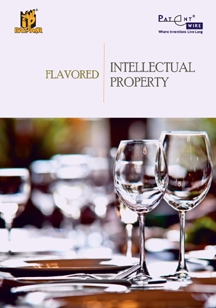Food Industry
Indian food reflects a perfect blend of culture, tradition, and diversity. Due to various recipes in Indian cooking methods, our taste buds are so different from rest of the world. Given the range of diversity in soil type, climate and occupations, the cuisines in India are very different from each other and are locally influenced. Food in India is influenced by religion, caste, state, rituals, and by various civilizations, which have contributed their taste in its overall development of this Industry.
We have never discriminated among our food choices. Although one of the main reasons for this apathy may be due to the fact that it is “made in India” or probably because we stamped our mark in all delectable imports such as pizza with tandoori chicken toppings, kuttu aata based pizza bread; burgers with paneer burger, etc. and we don’t see food as potential threat that could monopolize industry.
However, like any other sector with globalization foreign food corporations have created a deep seated footing in India and are monopolizing it. At first when GlobMcDonald’s entered India in 1996, against the backdrop of a market that was hesitant to try fast food and was still dependent on the “tiffin” lunch boxes many lug to work, their existence in India was questionable. Two decades later, things have changed. India’s fast-food industry is expected to double in its size between 2013 and 2016, to $1.12 billion, according to the Economist Intelligence Unit. And demographic trends mean it could become the next mega-market for international fast food players.
Here the big question is, whether the Indian Food Industry realizes that their defenses have been breached and foreign corporations are entering India with monopolies in their armories where their equipment and recipes have proprietary safeguards, which makes survival for indigenous business very difficult.
Let’s analyze what offences and defenses can be created by Intellectual property rights with focus reference to the food industry in India.
TASTE OF IP
Intellectual Property is an asset or property because like any other property it can be sold, bought or gifted, and huge investments of money and knowledge are made to create this an asset. Therefore, protection is paramount like any other industry.
The right time to protect any IP is right at the inception of innovation, as delay in protection increases the chances of being leaked, therefore losing novelty. Protection of innovation is equally important as it strengthens the business by enforcing monopoly.
The key like every other industry ‘creativity’ is the key to IP; however owners shy away from dishing out novelty. In most cases even if they do create, they often fail to protect their intellectual property due to lack of awareness. As food industries diversifies itself by advertising and marketing in this digital age along with new means of social-media, now is the time to protect the intellectual-property assets, as boundaries have shriveled and accessibility is at 4G.
Getting proprietary right over a creation adds value and strengthens brand and further staves off the competition.
TRADEMARK
To establish a successful business, branding is the most important as through branding a manufacturer can make a product distinguished from the products of others. Branding in food industry requires a great deal of effort. Trademarks are an integral part of any food company’s branding strategy. A trademark is a brand name. A trademark or service mark includes any word, name, number, symbol, device, or any combination, used or intended to be used to identify and distinguish the goods or services of one business from those of another, and to indicate the source of the goods or services. However, colors and even smell can also act as a trademark, provided they can be graphically represented and are capable of distinguishing. The more distinctive a trademark is the easier it is for to obtain a trademark registration.
Selecting a mark
Avoid likelihood of confusion – likelihood of confusion exists when the marks of the parties are similar (looks alike, sounds alike, similar meaning or create similar overall commercial impression) or the parties have related goods and services in such as way that the consumers are likely to believe that it comes from the same source.
Create a strong mark – a strong mark fulfills two main objects
1. Stop third party use and
2. Easier to protect
Weak Mark
Generic words/ terms – these are common everyday names for goods and services e.g. CARS for automobiles
Descriptive words/terms – directly describe the features or quality of the goods or services or provide the information but do not identify or distinguish the goods or the services e.g. CREAMY for milk
Suggestive marks – suggest qualities or characteristics of the goods and the services without actually describing them e.g. GLANCE A DAY for calendars
Strong mark – measured by its distinctiveness
Fanciful and arbitrary marks – they are inherently distinctive as they are created or inventive that does not have any dictionary or other known meaning and therefore less likely that they are being used by third party like ROSMO for Water purifiers
Distinctiveness Created by Goodwill- APPLE®, Pepsi®,
Protection under Trade Mark –
1. Company’s name, restaurant’s name,Distinctive names should be considered while naming a restaurant. e.g. McDonalds, Bikanerwala, Pizza Hut, Subway, Domino’s, etc.
2. Signature names for the dishes:e.g. “Snack harem” for Cheese burger.




